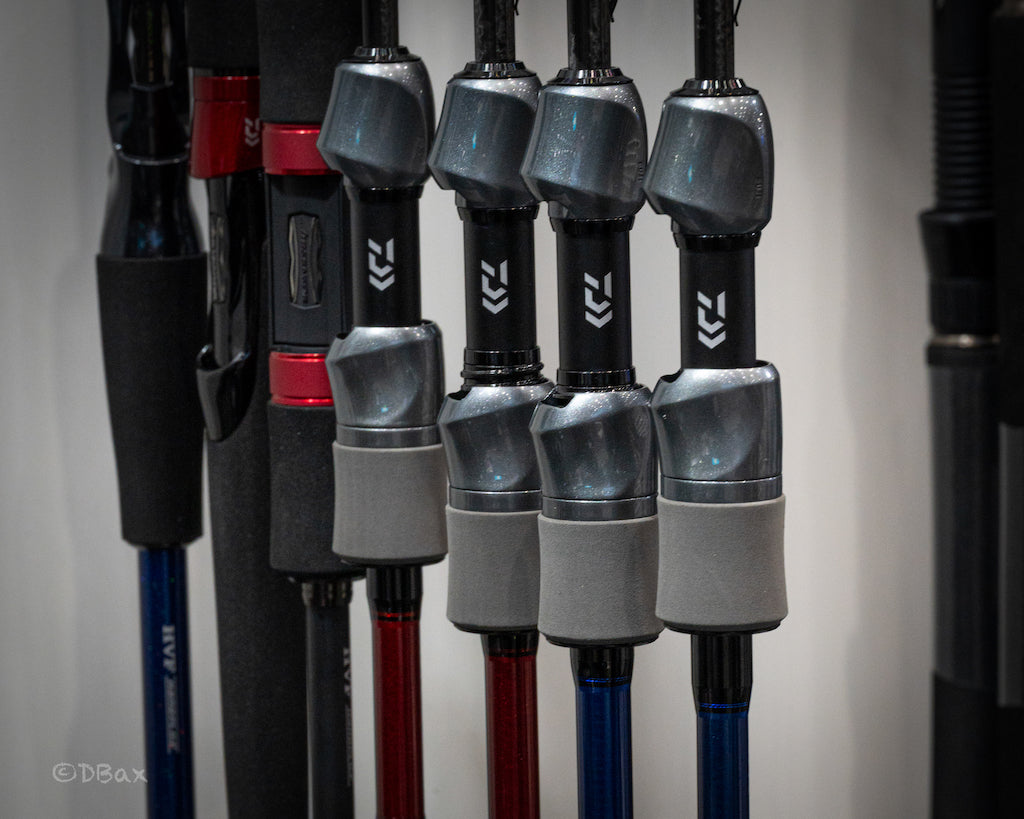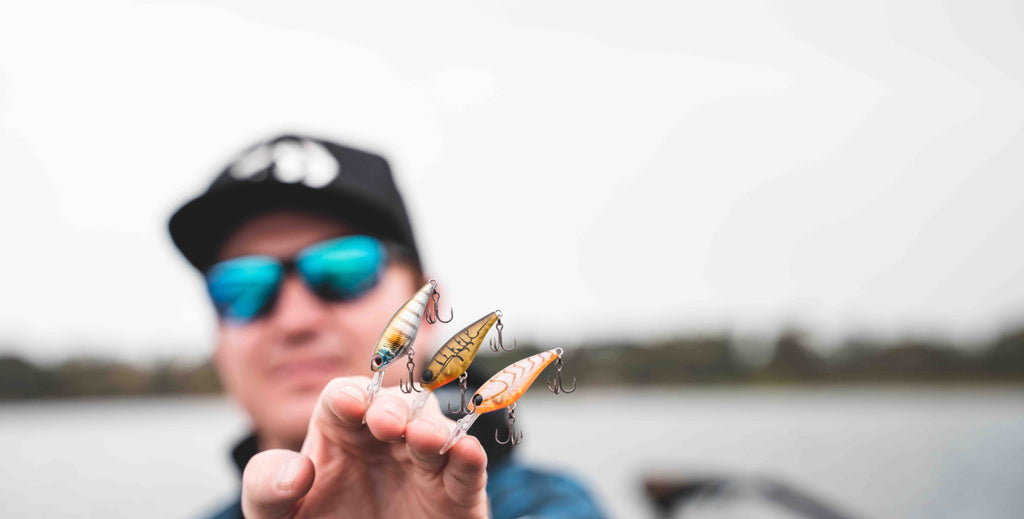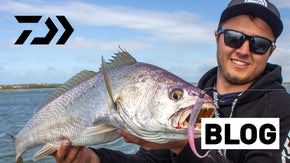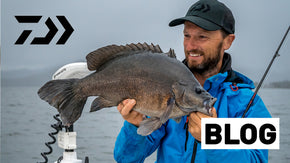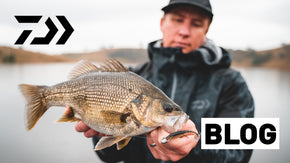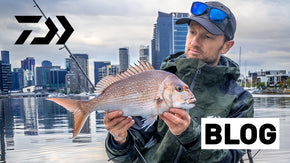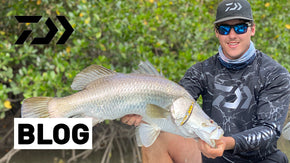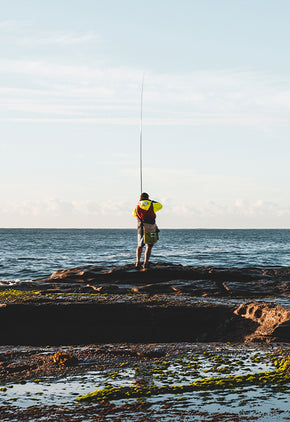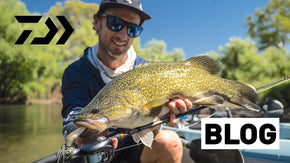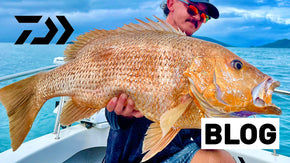Posted 23th June 2023
How to Catch Bluefin Tuna in South Australia
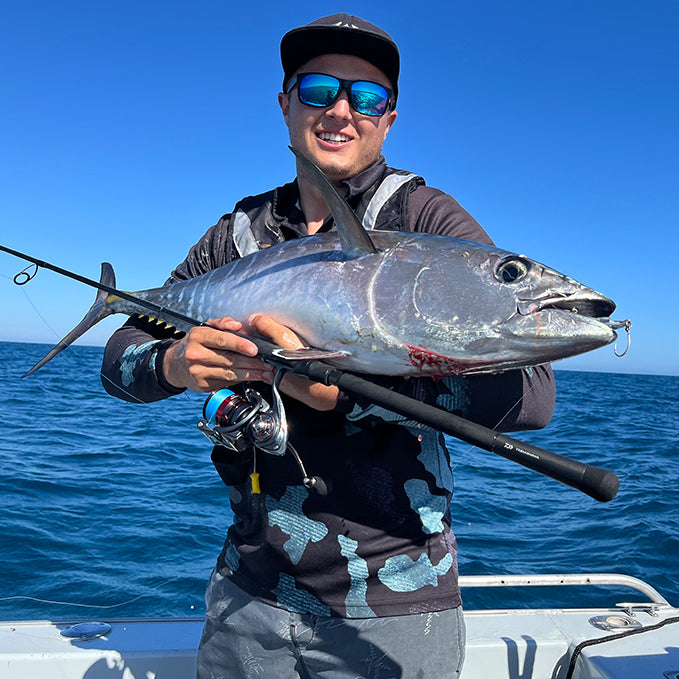
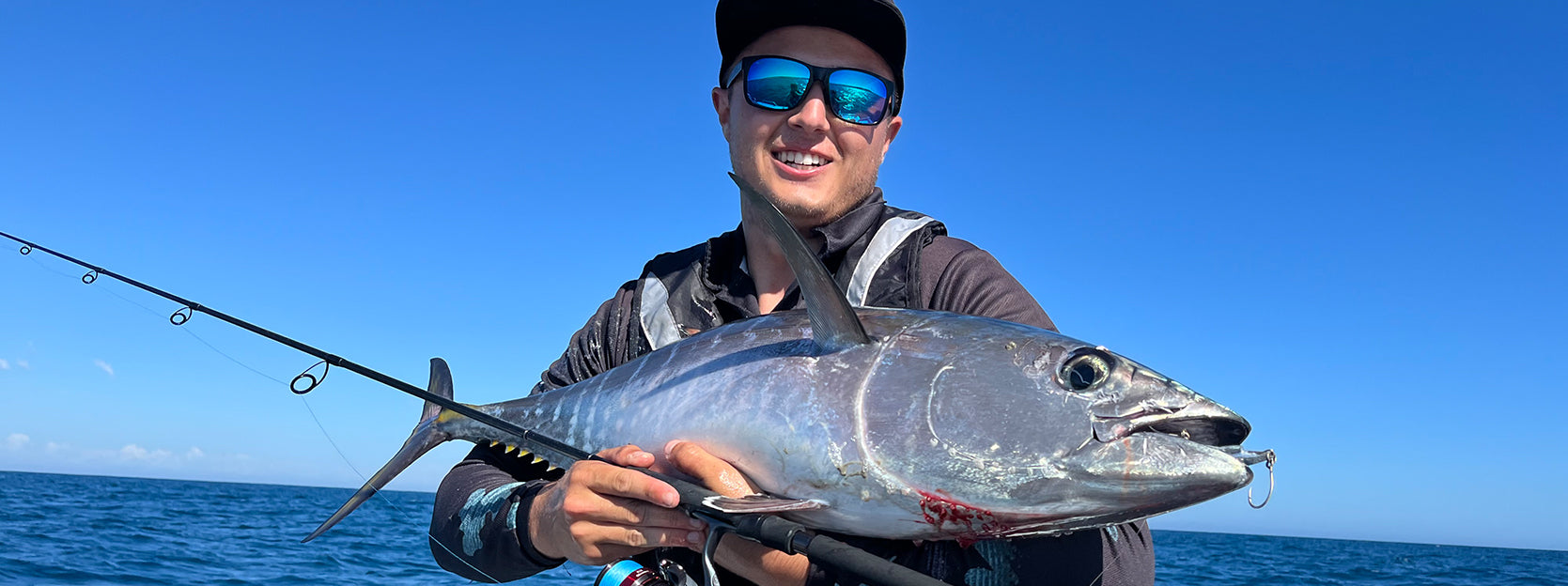
By Joshua Davey
It was a slow start for the annual run of Southern Bluefin Tuna (hereafter SBT) in South Australia. Freshwater flows from the Murray River had reached unprecedented levels, leaving not only freshwater extending kilometres out to sea but with it acres of dead carp floating and washing up on many of our south-coast beaches. In fact, the freshwater plume was so large, it could easily be seen by satellites. Unsurprisingly, in addition to lower-than-average water temperatures, there was doubt in everyone’s mind as to whether our beloved SBT would even show their tails this summer. But with a little patience, and luck, this year turned out to be one of the most unique SBT seasons I have ever witnessed.
South Australians were blessed with SBT quite literally at our doorsteps, showing up in locations that are completely unheard of, throughout our gulf waters. This provided a very real and unique opportunity for much of the states angling fraternity, as it offered a chance for those with smaller boats and kayaks (yes I said that right!) to access a fishery that is usually reserved for the larger boats offshore. This of course sent many of the state’s anglers into overdrive, with all of the local gulf boat ramps completely full of hopeful anglers looking to land an SBT. Unfortunately, most were unlucky even though there was and currently still is, a large abundance of fish available. Which is why I am taking the time to write this blog, so if you want to improve your chances at snagging an SBT in South Australia, pop on your reading glasses and grab a notepad, as I let out my secrets to try and increase your chances.

How to Target
Obviously step #1 is to find the fish in the first place. SBT are creatures of habit, now they definitely have tails and can move incredible distances but quite often you will find them in similar areas day in day out. The most important factor for finding SBT is to find the bait. The easiest way to do this is to look for birds, I’m not talking about single seagulls up high on a mission. I’m talking about groups of gannets or more often terns in groups on the horizon, ideally bombing the water. It pays to keep your eyes peeled, scanning constantly and with enough experience you will learn to read the body language of these birds and how that translates to what the fish are doing down deeper. Other birds to look for are little brown mutton birds, typically in large groups sitting in the waters surface. If you find a patch of these, there is likely action down deeper. If you fail to find any birds, which can happen some days, then you need to understand the bait. Just like any fish, baitfish love structure which I believe is the key reason you consistently find tuna in the same areas. Instead of aimlessly crushing around looking for tuna, focus on areas of reef or contours on your charts. Finally, it is possible to find tuna that aren’t actively feeding, that are just ‘milling’ or ‘sunning’ themselves near the waters surface. This requires calmer conditions, and a trained eye to see darker patches or just a slight difference in the ripple pattern on the waters surface.
When it comes to successfully targeting these SBT, I would say there are three main methods: trolling, casting or cubing. Trolling would easily be the most adopted method here, which involves towing around lures with rods in the rod holder, using the speed of the boat to work them. The second is casting, which speaks for itself really. This involves spotting schools of tuna and casting your lures in/working them back to the boat. Finally, there is cubing, which some people refer to as ‘chumming’, which involves the use of berley, typically pilchards to keep a school around the boat. Ill break all these methods down in more depth below. As I say to everyone starting out, if you know the fish are there and what you are doing is not working, then change it up! It amazes me how many people just stick to trolling on a given day, when those casting around them are hooking up. They say that insanity is repeating the same thing over and over and expecting a different result.
Trolling
As I mentioned before this would easily be the most adopted method for chasing SBT down here. It sounds simple, but there are a few key factors to doing it successfully. There are two main types of lures for this method, skirts, and divers. It is a personal preference as to which you use, but I often run a mix of both, purely to hedge my bets. As many seasoned tuna anglers will attest to, it is amazing how one lure in your spread on a given day, for no apparent reason will consistently out-fish the rest. Only to not catch a thing on the next trip. So, the take home from that is variety is key. Setting your spread correctly however takes a bit of experience. Each style of lure, particularly skirts have preferred running locations, so considering that this article is mainly targeted at the smaller boats let’s assume we are running a 3-rod spread. In this case I would be running a diver in the short corner, as close as possible to the boat (2-5 m), then a second rod in the long corner running a choice of a deep diver or a pusher style skirt set at a distance of around 10m. Finally, I will run the final rod out the middle (Shotgun position), which would be either a bullet or jet head style of skirt way out the back of the other lures and wake, into the clearer water. When setting this spread it is important to put out the shotgun first, followed by the long corner and then the short corner to eliminate tangles. This is also why we stagger the distance of the lures, to ensure they do not tangle when we make tight turns. Speed is an important consideration as well, when running all divers, or a mix my trolling speed will be around the 10 kph mark. However, skirts often run a little better at higher speeds, so when running a full spread of skirts don’t be afraid to bump it up a little to a minimum of 12 kph. Approaching schools of fish is the final consideration when you are trolling, if I am to offer one single piece of advice, it is DO NOT drive straight over the top of them. Not only will you likely not catch anything, but you will also ruin it for yourself and everyone else. Instead, try doing circles around the outside of the school, because as you turn, your lures will pull through the centre of the fish without the boat disturbing them.
Casting

I opt to cruise around at higher speeds to cover ground until I come across schools of fish. When approaching a school, boat positioning is an important factor. Try and get the vessel within casting distance upstream/up current of the fish, before cutting the motor to be as stealthy as possible. Long casts are important, but casting accuracy is paramount. When SBT are busting up, you will either see them pushing the bait a particular direction, or they will have the bait balled up so tight all the white water is in one small spot. When they are pushing the bait, it is important to cast not where you just saw them, but predict where they will be, to place that lure in front of them. However, with the tighter workups, I have found you want that lure to land right in the guts of the action, I’ll even close my bail arm mid cast to make sure I can start winding instantly because more often than not your lure will be eaten immediately. For flighty fish, matching the hatch is essential. It really is incredible how SBT can be honed into such a specific sized bait, that if your lure is only a bit bigger, they will not go near it. Considering that many of our SBT have been feeding on tiny blue sprats and anchovies this season, I have increasingly been spinning small metals down to even 20g to get the bite.
The Daiwa OT jigs would be an excellent candidate. Small sinking stick baits have also proven effective, but make sure that whatever you are using has upgraded split rings and a single hook. I have also experimented with 5” Bait Junkie Jerkshads burned along the top paired with 1oz 5/0 Bait Junkie Jigheads, with great success and poppers can also make for some incredible visual eats. Once again, variety is key so change it up until you find what works.
Cubing
Cubing is an often-underutilised method for chasing SBT, but I will admit that I have had much better luck with this method further offshore. Typically, after hooking up to a fish either on the cast or troll we will start throwing handfuls of halved pilchards in the water, keeping an eye on them and the sounder as they sink. If the fish have moved in on the cubes, you will quickly see them under the boat charging through and eating them as they sink. Once all the cubes disappear, throw a new handful in, keeping the cube stream going to keep the SBT interested. When you are ready, have a rod rigged up with nothing but an unweighted hook (6/0 – 8/0) and rig up a full pilchard. Drop it over the side and let it sink down as naturally as possible on a loose line. If there is tension, or if it doesn’t look as natural as all the other cubes, they will not touch it. Keep a close eye on your line, once you see it ‘tick’ and take off at a rate of knots, snap your bail arm shut and hang on!

Tackle
Now that we have covered how to successfully target SBT let’s talk about the fun stuff, the tackle. As you can imagine, just about every method can have incredibly niche tackle to suit and if you are serious, I would strongly recommend spending the money on your preferred method. For instance, I absolutely love my casting so my #1 casting outfit is a Demon Blood S83 2/4 paired with a Maverick MQ 8000 XH and 40 lb J-Braid Grand. This outfit excels at casting the bigger lures such as poppers and stick baits yet can still handle medium sized metals. Ultimately it is a blast to use on smaller SBT but has enough backbone to muscle in those bigger models if you were to come across them. I do however take two more, less dedicated casting outfits with me. One being the TD Saltwater S71-3 paired with a Revelry HD MQ 5000D-CXH and 30 lb J-Braid Grand Multi. This is the ultimate allrounder, casting a wide range of lures, right down to those 20 g metals and BaitJunkies with ease. You may be in trouble with a properly big fish, but I have still landed SBT to 25 kg on this outfit. Finally, is my silly string plugger, the outfit I pull out for a bit of fun when all I can find are those sub 12 kg fish. It consists of a TD Black ‘Macka’ and KIX LT 4000D-C spooled with 20 lb J-Braid Grand. Leader sizes vary, I will typically start with either 50 or 60 lb J-Thread FC, but if the fish are really flighty will sometimes work my way down to 30 lb.
When it comes to trolling and cubing, one rod for me has stood out above all for its sporting ability on smaller fish but capability on those larger SBT. The Demon Blood S64-3/4 is as close to the perfect all round school size SBT rod as they come. In fact, if you were on a tight budget, you could even still cast with it! Pair this with a Saltist MQ or Certate SW in an 8000 or 10,000 size, spooled with 40 lb J-Braid Grand and you have a match made in heaven. However, for a more budget conscious option, a Saltist Hyper ‘Combi Jerk’ paired with a BG MQ in the same sizes will do a superb job.
Wrap Up
I’ll be honest this blog turned out longer than I expected, but I hope that it was informative. In South Australia our run of school sized SBT begins around Christmas time, right through to April/May, peaking around late January/Early February. Therefore, there should still be fish around by the time this blog is out. So, what are you waiting for? Grab your tackle bags, pack the boat, and get down to the ramp. Chances are, I’ll see you there!


 Contact Us
Contact Us Blog
Blog About
About
